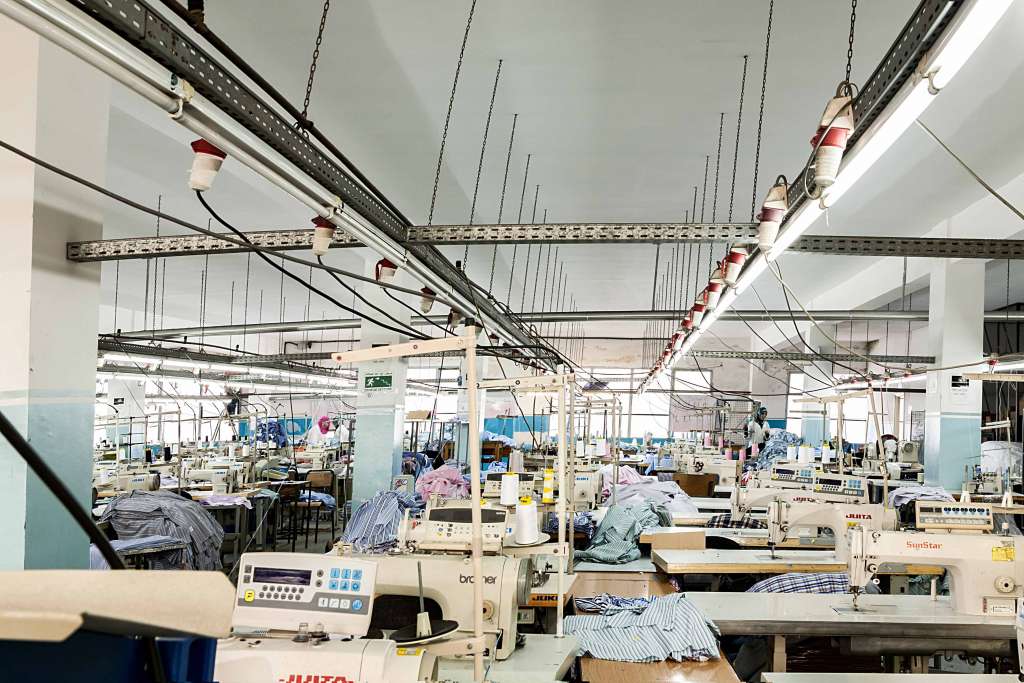Difference Between the Retail and Wholesale Prices in the Apparel Industry



The apparel industry focuses on making, assembling, cutting, sewing, and finishing. This is one of the fastest growing industries that has given several people employment. According to the data, the estimated size of India's textile and apparel industry was approximately USD 120 Billion in 2015, reaching almost 200 billion by 2020.
Even though every industry was impacted by the conflict and needed time to recover, the garment sector was prepared with several measures. As a result, the industry changed its approach and started relying more heavily on data in its operations.
The market for apparel and fashion is enormous because of the customers' continuous demand for something new.
Numerous garments are made in factories, sold to wholesalers or retailers, and then delivered to customers. Because this indirect clothing supply affects the price, consumers should consider their options before purchasing. The various stages and parties involved in the entire process affect both wholesale and retail prices. Let's look at how wholesale and retail prices differ in the garment industry.
Wholesale Price
The distributors and traders are charged a price for the products supplied in bulk. The cost of the item plus the manufacturer's profit margin is added together to create the wholesale price. The following formula is used to determine the wholesale price:
Wholesale Price = Total Cost Price + Profit Margin
There are mainly two wholesale pricing methods - Absorption pricing and differentiated pricing.
Let's know about these in brief.
Absorption pricing
In this method, the price is absorbed to determine the final price. It is a simple approach for calculating the wholesale price.
This method consists of 3 steps, and those are:
- Calculate the total cost priceThe total price can be calculated by summing the Variable Cost of the Product and Overhead Expenses plus Administrative costs/Number of Units.
- Calculate the profit marginTo calculate the profit margin, one needs to know the profit margin. It is the ratio between the Revenue and Net profit. Here the Net profit is the Revenue - The cost.
- Calculate the wholesale priceTo Calculate the wholesale price, add steps 1 and 2, that is-Wholesale Price = Total Cost Price + Profit Margin
Differentiated pricing
The method of differentiated pricing usually follows the demand law; this means that a product in every situation and every area has different demands, so the pricing changes accordingly. In this method, high profit can be achieved in the following ways:
- Setting the price higher than the average market value- This can be applied to the locations where the level of competition is low.
- At a lower price per product- One can let the stocked products be sold out rapidly. The best examples to understand this are last-minute sales of the old stock and many other ways.
Retail Price
The price paid by the customers to buy the final product is the retail price. The customers who buy from the retail store at the retail price buy it for personal usage and not for reselling purposes.
A 'suggested retail price' also exists, which the distributors or manufacturers recommend to the retailers for a particular item. But the retailers don't have to follow the law or the recommendation suggested retail price (SRP).
The retailer sets the price based on the maximum profit that can be made from selling a particular product. Shelf price, end-user price, accurate price, and resale price are the other words used to denote the retail price.
Retail Price = Cost of Goods + Markup; here, the Markup = Retail Price – Cost of Goods, and the Cost of Goods = Retail Price – Markup.
The finest illustration for the understanding of retail price is provided below.
Consider a retailer who spent $10 on clothing and now wants to make a $10 profit. The retail cost would immediately increase to $20 as a result.
Chain followed in the Apparel industry

Every industry follows a specific chain per the production process and customer demand. For example, in the apparel industry, the chain involves the following steps.
Research
Research is the initial link in this chain. This is important since the study is based on how the principles are applied, and it is the notion. Conducting extensive market, client, material, and other research is vital.
Design
Designing apparel depends on the trend and the demand of the customer. For example, nowadays, people prefer to buy loungewear, loose clothes, and other such stuff, so the company focuses on manufacturing per the market trend. This step involves designers who are extremely good with their ideas and imaginations.
Raw materials purchase
Once it is decided which apparel needs to be prepared, the list of required raw materials is accordingly made. Later on, it is essential to purchase all the raw materials so that the apparel can be produced in large numbers.
Manufacturing
The process of manufacturing, also known as production, is how raw resources are used to carry out a designer's idea. Cutting, sewing, and completing an outfit may be part of this process.
Wholesale
When the clothing is produced, it is sold to distributors and wholesalers at an initial price that includes the cost of the goods, manufacturing, and a small profit.
Retail
The product is released from the wholesalers to the retailers where customers buy the apparel. Here the price differs a lot as compared to the cost of wholesale.
Wholesale vs. Retail
- The Wholesalers in the market deal with limited products.-The retailers have to handle a variety of products
- The profit margin of the wholesalers is less.-The profit margin of the retailers is much higher.
- The apparel industry has fewer number of wholesalers.-Compared to the wholesalers, there are many retailers in the industry.
- In wholesale, the capital investment is higher.-Retail business does not have as high capital investment as wholesale business.
- Wholesalers reach a higher range of consumers.-Retailers are stuck to their one shop.
Conclusion
There's a lot of difference between wholesale and retail prices. The buyer buys the apparels in huge quantity at the wholesale price. In comparison, the customers who buy from the retailer at the retail price buy as per their needs. So the best way to enjoy the benefits is to be the wholesaler and retailer.
This will enable the business to produce its goods, and rather than distributing them, store them there instead, where they may be sold to clients at a profit. The capital investment might be greater in this case, but the gain will also be more significant. 85% of shoppers, according to data, only buy clothes every three months. Consider all options and take effective actions.

Fashinza has an average production cycle of 6 weeks and requires less than 90% follow-ups. There are 200+ brands and 250+ manufacturers here, and you'll be surprised to learn that the company has already delivered approximately 8,753,178 pieces.



















